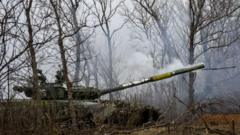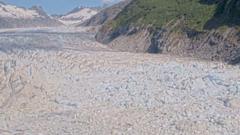In a striking revelation for marine ecological health, researchers have uncovered that half of Alaska's common murres, about four million birds, have perished due to a catastrophic marine heat wave known as "the Blob." This significant loss marks one of the largest die-offs of a single species of wild birds or mammals in recorded history. The alarming statistics were published recently in the journal Science and reveal the grim realities our ecosystems face amidst rising global temperatures.
The disaster began in 2015 and 2016 when thousands of malnourished murres and their carcasses were discovered along the coast from California to Alaska. Initially, officials documented 62,000 emaciated corpses, raising concerns about the viability of these seabirds. Investigations soon pointed to an unprecedented marine heat event that caused widespread disruption to the food web.
Scientists, including Heather Renner, a supervisory wildlife biologist at the Alaska Maritime National Wildlife Refuge, highlighted the ripple effects of the heat wave, which not only decimated murres but also impacted various marine species from plankton to larger fish. The marine heat wave led to significant declines in the fish populations that these birds heavily rely on for sustenance.
As the marine ecosystem continues to struggle under the pressures of climate change, the plight of the common murre serves as a critical indicator of the broader environmental repercussions we face if immediate action is not taken to mitigate these trends. The findings resonate as a stark reminder of the precarious balance within ecological systems, prompting urgent discussions around conservation strategies and climate action.






















